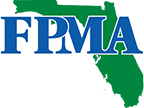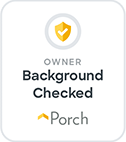
Help There Are Bed Bugs Inside My Orlando Home
Comprehensive Bed Bug Treatment Solutions
Do you think you might have a bed bug infestation? Do you think you've seen early signs of bed bugs inside your Orlando home? You may take comfort that sometimes residents think they have bed bugs when they actually don't. If you don't know for sure, and you want to know for sure, you've come to the right place. We're going to dig into how to identify bed bugs, where bed bugs hide, and warning signs you can see—even when you don't see bed bugs.
If you already know you have bed bugs, you can skip to the section titled, "Immediate Steps for Bed Bug Infestation in Orlando." We'll share some tips that may stop your infestation immediately. If you want us to come out and look at your infestation, navigate to our contact page for professional bed bug pest control in Orlando.
The Green Flag Services team is happy to assist you.


Why Choose Green Flag Services?
-
Locally Owned & OperatedWe are part of your community and take pride in caring for the residents and businesses of Central Florida.
-
126+ Years of Combined Industry Experience
Our seasoned professionals bring unparalleled expertise to every pest control solution.
-
Customer First MindsetWe stand behind our work. If you're unsatisfied for any reason or have an issue with pests again, give us a call and we'll make it right!
-
Fully Trained & Certified TeamWe are members of the National Pest Management Association and Florida Pest Management Association with over 55 years of industry experience.
-
Pest Control SolutionsThe green in "Green Flag" is to assure our customers that we only use environmentally-safe products for the safety of your family and pets.
-
Satisfaction GuaranteedYour satisfaction matters to us, which is why we offer a money-back and a reservice guarantee.
How To Properly Check For Bed Bugs
Bed bugs are sneaky pests. They don't like the light, they're mostly nocturnal if circumstances allow, and they hide in tight spaces. All of these add up and make bed bugs a pain to find. Knowing what to look for and where to look is a big help. Whether you're at home or away from your home, you can use these tips to help you find and identify these insects.
- Beds are a good place to search first. When bed bugs are carried into a new location, they tend to hang out near or inside beds—hence their name.
- Inspect sheets, pillowcases, and bedspreads for black fecal spotting or brown stains created by blood excreted from bed bugs.
- Inspect mattress seams with a credit card to bring bed bugs, shed skins, and eggs to the surface.
- Probe and inspect under labels, around vent grommets, and in other hiding places on your mattresses.
- Use a flashlight to inspect recesses and sockets in your bed frame. If you see something wiggling in a dark hiding place, you probably have bed bugs.
- Inspect around your bed. Look for black streaks on baseboards, outlet covers, and other surfaces.
- Bed bugs love to hide under the feet of furniture. Pest control technicians often find bed bugs under bed and nightstand feet. They squeeze right in there.
- If you're performing an inspection at home, make sure to check luggage, bags, pocketbooks, and other items you bring with you on trips.
The rule of thumb with bed bug detection is to look in every tight space and every dark void you're able to inspect. If you can't see into the places where bed bugs hide, inspect the surface of items. You're looking for black feces, dried blood stains, tiny white eggs, shed skins, and the bed bugs themselves. Detecting bed bugs is often a challenge because they don't always look like the bugs you may have seen on the news or internet. Before heading to the next section, let's take a moment to discuss what bed bugs look like in each stage of development.
- Eggs: Bed bug eggs are white and about 1mm long. That is the width of a credit card. You may find eggs alone or in small batches.
- Newly Hatched Nymphs: Bed bug nymphs are white, seed-shaped, and have six legs. They are about the same size as well. If a nymph has had a blood meal, it will look like a little red insect. The reason they are red is that you can see blood in the abdomen. Since the abdomen is the largest body part by a long shot, recently fed nymphs look bright red instead of white.
- Growing Nymphs: As bed bugs grow, they become more of a tan color. While still seed-shaped, a fed nymph can look bloated and more of a pill-shape.
- Adult Bed Bugs: At only about 4.5 mm long, adult bed bugs are still quite small, but they are easier to see because of the darker reddish coloration and less skin transparency.
You're not likely to see a bed bug for long, so learn these identifying traits. You may not get a second glimpse.

What To Do If You Find A Bed Bug In Your Home
Bed bugs often hang out in or near beds if they can. They'll stay in this area in the early months of an infestation. Some people attempt to get rid of their bed bug infestation by throwing their bed out. We can understand how desperation can drive people to take drastic measures like this. Unfortunately, it is not a guaranteed way to stop bed bugs. As we pointed out, they often hang out in strange and unexpected places, such as underneath the feet of night stands. It is best to perform a detailed inspection of your mattress, box spring, bed frame, and the surrounding area, and do the following:
- As you search for bed bugs in and around your bed, keep a vacuum close at hand. If you see bed bugs, suck them up quickly.
- Wash your sheets, pillowcases, and bed spread in hot, soapy water. Once done, run all your bedding through a dryer cycle. Together, these are sure to destroy any bed bugs in your bedding.
- If you detect bed bugs hiding in a carryable item that is dryer-safe, put it in the dryer for thirty minutes. The heat of your dryer will exterminate bed bugs in all stages of development.
- If you detect bed bugs in an item that is not dryer-safe, such as your alarm clock, put it in a sealed plastic bag and place it in your freezer for four days. That will exterminate the bed bugs inside and not harm your electronic device.
- Vacuum your rugs routinely until you know the bed bugs are gone.
When detected early, natural pest control for bed bugs is often enough. If you're at a point where control products are needed, it is best to contact a professional. We could write volumes on all of the ways bed bugs can elude over-the-counter products and continue to plague you for months. DIY bed bug control just isn't worth it. On top of dealing with bed bugs for longer, you can set yourself up for extra misery after getting a professional treatment. If a friend or family member picks up bed bugs, they can bring those bugs back into your home at a later time.


Hear From Our Happy Customers
At Green Flag Services, your satisfaction is our priority! See for yourself what our customers have to say about working with us.
-
"Definitely recommend this company!"Communication was excellent from when they arrived to sending us the invoice. They did a great job letting us know exactly what was being done and when.- Bonni K.
-
"AAA+++"Green Flag is the best company and has the best employees for pest control Not one bug since they started and we live in woods! I've recommended them many times and will continue to do so. The technicians are great people and we love seeing them! the mater- Donna S.
-
"I highly recommend his services"Very impressed with Andrew and his company. He was on time, very knowledgeable, very courteous, and did a fantastic job.- Ken R.
-
"Caleb was both polite and professional"He treated my condo in a timely manner, and did an excellent job! I'm very pleased with the service that I received from Green Flag Services for more than a year, and highly recommend them to anyone!- Dana C.
-
"Definitely worth talking to Green Flag"Andrew called ahead before he arrived to let me know when he would be there. They were fast and effective and at a reasonable price. I was looking for mosquito control and his recommendations didn't involve higher-cost services just to sell them.- David W.
-
"Haven't seen a bug since he left."Jeff was professional and knowledgeable. Arrived 5 minutes earlier than appointment time, then after introductions went straight to work.- Bernard B.
-
"Would recommend to my family and friends."Great service, Jeff came out and treated my spider issue. Fast, efficient, and affordable.- Zach B.
-
"The Best!"Geffry is a great asset to your company. He is professional and knowledgeable. He gave great service to my mom's house. We all truly appreciate him coming and taking care of our problem.- Wendy W.












